If you set out to collect several hundred Fall Armyworm larvae for an experiment, I can tell you that it is a long task, which seems to take longer each year.
Sure, if you look for them they are easy enough to find in fields that have perhaps not received a proper control program, but this reaffirms to me – admittedly unscientifically – that Fall Armyworm pressure is generally low this year and has in fact declined for several seasons.

I was all set to do a mass collection of Fall Armyworm larvae last week for our annual insecticide assay, where we expose the larvae under controlled conditions to different insecticides. But I think we would need quite a big team and a farmer willing to allow us to dissect a lot of plants in order to obtain sufficient numbers.
The prolonged wet conditions this seasons may have helped reduce pressure by disrupting adult moth activity, however there have been plenty of periods where eggs could have been laid effectively, so I think there is more to this than we understand…
Small quantities of certain nutrients can make a big difference to your maize crop. I regularly see developing, nascent deficiencies in the fields that I look after and also carry out routine leaf tests on crops to try and detect problems before they become too serious.
In the thousands of leaf tests that we carry out at Cropnuts from farms across the country, we regularly find that Copper and Boron are the most common elements that are deficient. Naturally, we also find that these two in particularly almost always shows a yield response in trials.
Copper can be easily rectified with a low cost application of a foliar spray. I try to apply a total of around 250g per hectare of Copper which works out around 500 grams of copper oxychloride or oxide. It you can, split this into several applications, from 2-3 leaf up to 10 leaf stage to keep the crop well supplied.
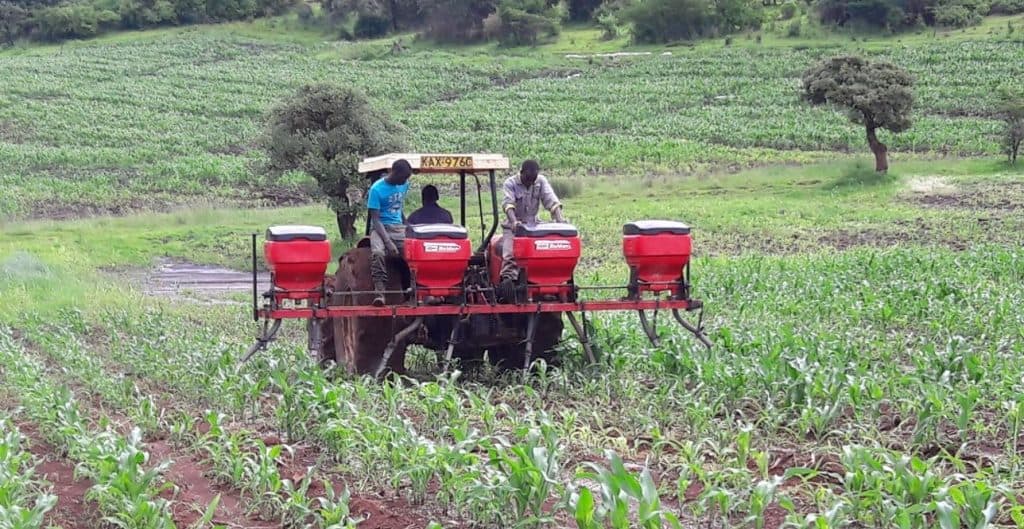
If you have ever noticed your maize crop failing to fill grains right to the tip of the cob, Boron could be the problem. Boron is crucial during reproductive phases for pollen formation in particular, and I have often seen it increase maize yields by 20% in severe cases. 150g per hectare of Boron, typically 1 l/ha of a foliar product, applied around 8 to 10 leaf stage is highly effective.
Magnesium and Sulphur are often on the low side, especially where Magnesium Sulphate or a fertiliser blend containing MgO and/or sulphur was not applied at planting. Your complete soil tests can give you a warning of impending Sulphur deficiencies, but it can be easily leached in heavy rain so leaf test, and examine the plant regularly for symptoms
Magnesium in particular tends to be apparently on leaf tests when soils are cold and very wet, in which case the faint yellow striping is visible on the leaves. Thankfully it can be easily fixed by spraying 5 kg/ha of Magnesium Sulphate for around 150 Shillings.
Nitrogen in the leaf can give a good guide on topdressing or how successful it was, but remember to use this in conjunction with Soil Available Nitrogen testing, past experience from Nitrogen Rich strips in fields, and the general appearance of the crop.
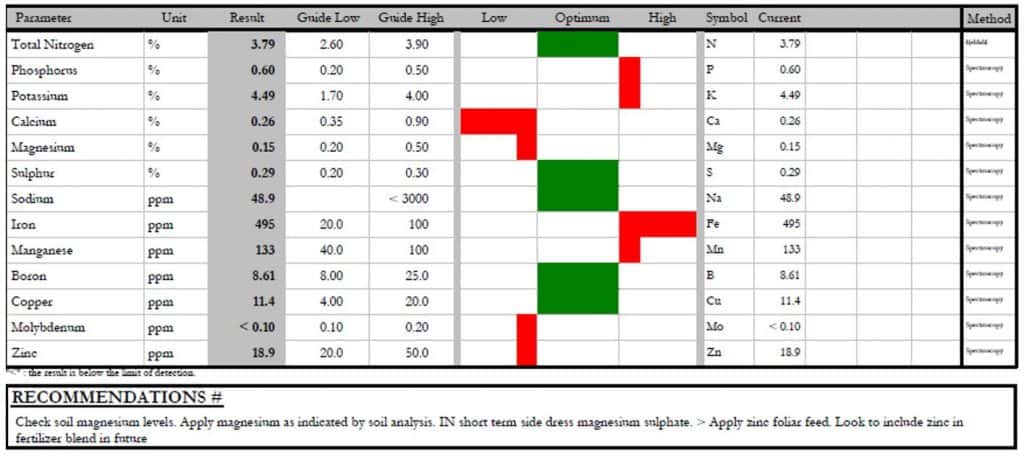
For many top yielding maize crops in the United States you regularly hear agronomists say that they contain over 5% nitrogen in the leaf rather than the standard 3-4% target, although we are talking 70 bags per acre type yields, for which everything needs to be in line.
Zinc shows up on some leaf analyses as deficient, however this is very dependent on where you are in the country. Although zinc shows a very vivid visual difference in the crop, I find it is often harder to find yield increases in trials unless leaf levels are well below 15ppm.
I have seen several examples recently in which healthy crop roots resulting from a sound rotation and good soil structure have created some interesting implications for agronomists, and is fitting with our Cropnuts mantra of “growing more, with less”.
Not only is yield increased significantly – especially in dry years where deeper, more extensive roots need to be working harder to access moisture – but healthy roots often open up a wide range of opportunities to save on inputs.
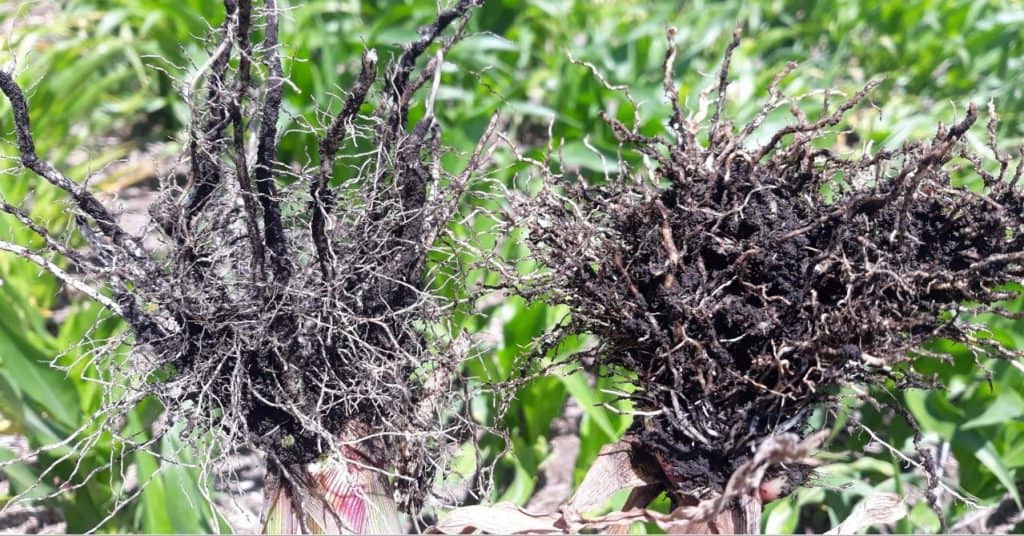
On one farm where seed maize is produced around Nakuru, we have typically seen leaf rust come into the crop from the 4 collar stage where maize and cereals have dominated the rotation. But this year, after Soybeans, Sorghum, Barley and Peas over the last three years the disease pressure is sufficiently low that we could have applied just one fungicide rather than two.
We also have a maize nutrient trial on this site, and the visibly stronger roots from far lower nematode damage means that it is actually hard to single out plots which have had no phosphate applied in the seedbed. Remarkable how nutrients available in the soil can effectively increase dramatically where roots are given the chance to proliferate.
Legumes are notoriously good at releasing phosphate from the soil which subsequent crops can benefit from, so there is probably scope to reduce fertiliser inputs in future.
The crop has also grown away from early Fall Armyworm damage exceptionally quickly compared to neighbouring crops, again opening up the possibility of fewer insecticide sprays, great news for the environment and farm profits.
Less fertiliser, less insecticide and fewer fungicides. What’s not to like!
I took a trip up to Mau Narok last week to have a look at this incredible farming country. I am always amazed at good some of the crops are considering the compacted soils from years of cattle wondering the fields after harvest, and decades of mono-cropping.
Cattle can have a place in arable rotations if carefully managed and compaction is avoided, and indeed in many parts of the world livestock and cropping are integral.
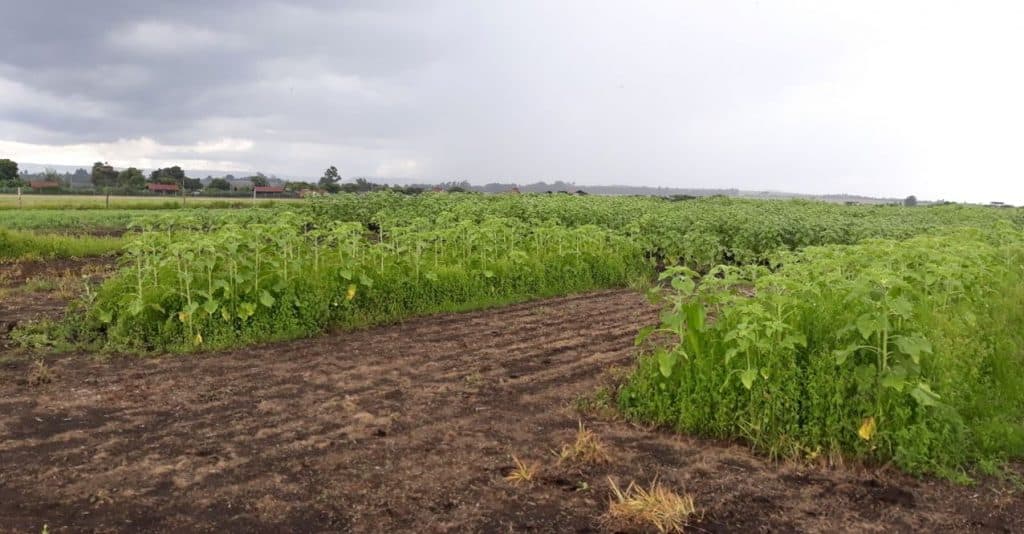
Suppose half of the cropping land was put aside to rotational pasture or forage land, that actually produced feed that cattle could thrive on rather than just straw to fill their bellies?
Could a three year grass, herbs and legume mix on even a third of that land support the current cattle population in Mau Narok? In Chile and New Zealand, it is common for stocking rates of 2.8 dairy cows per hectare to be sustained, with 200 Mj of energy per cow per day! And that is with a 6 month winter in between!
And imagine how much more productive the arable land could be with better soil structure, less erosion and far greater yields.
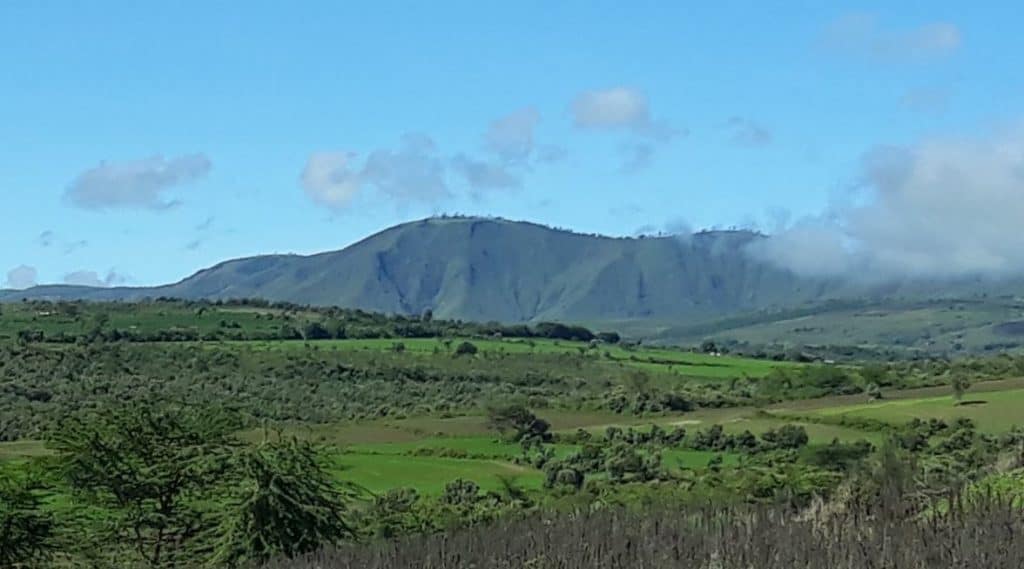
For now however, cover crops intrigue me as a way of improving soil cover, structure and still providing some livestock forage for the grazing community. This is a picture of one of our current trials, where a mix of Sunflowers, Linseed, Maize, Cowpeas, Forage Brassica, Lentils and Red Clover have been grown for 9 weeks and are now being seeded into wheat, which will hopefully show some benefits (Mycorrhizal fungi, soil structure) and probably some negatives (less moisture, harder to plant through).
We will keep you up to date on how the experiment with cover crops develops, but it is certainly an intriguing concept.
Till next time
Happy farming!
David

David Jones is the Broad Acre Specialist at Crop Nutrition Laboratory Services Ltd. (CROPNUTS). David has a keen interest in soils and no till farming systems where he has undertaken work looking into weed levels and changes in soil structure, and has extensive experience in field trials and in the development of precision farming techniques. In his spare time he enjoys playing rugby. Follow David on Twitter @Cropnuts_agron
Order our services and get to know how to improve your soil for better yeilds.